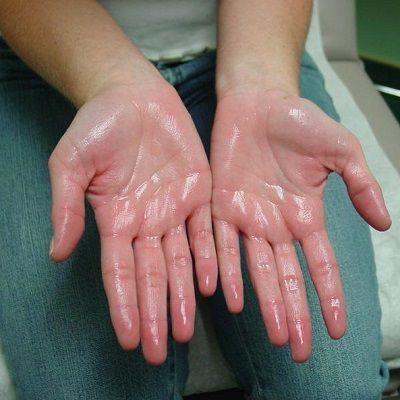How to Stop Sweaty Hands and Feet: Top Dermatology Treatments for Excessive Sweating
How to Stop Sweaty Hands and Feet: Top Dermatology Treatments for Excessive Sweating
Blog Article
Understanding the Source of Excessive Sweating and Its Influence On Every Day Life
While it is generally comprehended as a physical response to manage body temperature level, the triggers for too much sweating can differ widely among individuals, including not just physical elements yet also psychological and emotional aspects. By diving into the root creates of hyperhidrosis and discovering its diverse impacts, a deeper understanding of this prevalent concern can be gained, dropping light on the complexities that people grappling with extreme sweating browse on a daily basis.
Physiology of Sweat Glands
The policy of sweat manufacturing, a crucial physiological procedure, is mostly regulated by the task of sweat glands distributed throughout the human body. Sweat glands are categorized into two primary types: eccrine and apocrine glands.
When the body temperature climbs, either due to physical task, high temperatures, or psychological anxiety, the nerve system sets off the gland to produce sweat. This sweat is made up primarily of water and electrolytes like sodium and chloride. The process of sweat production is important for preserving the body's inner temperature within a slim, optimum range, highlighting the critical role gland play in human physiology.
Triggers for Excessive Sweating
In comprehending the root creates of excessive sweating, it is vital to identify the triggers that can lead to this physiological reaction. Physical effort, high temperature levels, and spicy foods are additionally recognized to trigger extreme sweating in people susceptible to this condition.
In addition, medicines such as some antidepressants, opioids, and certain supplements can also serve as triggers for hyperhidrosis. Understanding these triggers is necessary in managing too much sweating properly - Treatment for hyperhydrosis of hands and feet. By determining and resolving the certain triggers that prompt extreme sweating in a private, health care suppliers can develop personalized therapy strategies to minimize this condition and enhance the individual's top quality of life
Medical Issue Associated
Connected with excessive sweating are numerous clinical problems that can exacerbate this physical response. One usual problem is hyperhidrosis, a condition defined by abnormally increased sweating that exceeds the body's thermoregulatory requirements. This can show up in focal areas like the palms, soles, underarms, or face, impacting a person's lifestyle due to social humiliation and discomfort.
In addition, endocrine conditions such as hyperthyroidism, diabetic issues, and menopausal warm flashes can also result in extreme sweating. Hyperthyroidism causes an overflow of thyroid hormonal agents, accelerating metabolic rate and triggering sweating. Diabetes mellitus can induce sweating episodes, especially during hypoglycemic episodes when blood glucose degrees drop also low. Menopausal warm flashes, credited to hormone changes throughout menopause, can trigger extreme and sudden sweating, commonly gone along with by flushing and heart palpitations.
Additionally, infections like tuberculosis, endocarditis, and hiv have actually been connected with evening sweats, a typical signs and symptom known to interrupt rest and affect total wellness. These medical problems highlight the varied range of underlying factors that can add to extreme sweating, demanding extensive assessment and administration by health care experts.
Psychological and Psychological Factors

Effect On Social Interactions
Too much sweating can have extensive results on a person's ability to involve comfortably in social communications. The noticeable indicators of sweat discolorations or damp patches on apparel can result in shame and self-consciousness, triggering people to take out from social circumstances. This withdrawal can influence partnerships, limit social activities, and hinder professional and personal growth.

Additionally, the anxiousness and self-esteem problems coming from extreme sweating can influence interaction and interpersonal skills. Individuals may struggle to concentrate on conversations, join group tasks, or share themselves with confidence. This can result in sensations of seclusion and solitude, as social connections come to be challenging to keep.
Conclusion

While it is frequently recognized as a physical feedback to control body temperature, the triggers for extreme sweating can vary extensively amongst individuals, incorporating not just physical elements yet mental and additionally emotional components. By diving right into the origin creates of hyperhidrosis and exploring its diverse effects, a much deeper understanding of this pervasive concern can be obtained, losing light on the discover this complexities that people grappling with too much sweating navigate on a day-to-day basis.
Physical exertion, high temperature levels, and spicy foods are also understood to cause extreme sweating in individuals vulnerable to this condition. By recognizing and dealing with the particular triggers that trigger extreme sweating in an individual, medical care providers can create individualized treatment strategies to ease this problem and boost the individual's quality of life.
Extreme sweating can have extensive impacts on a person's capability to engage pleasantly in social interactions.
Report this page